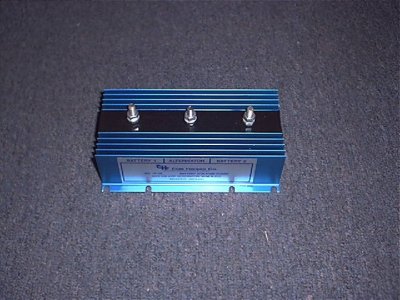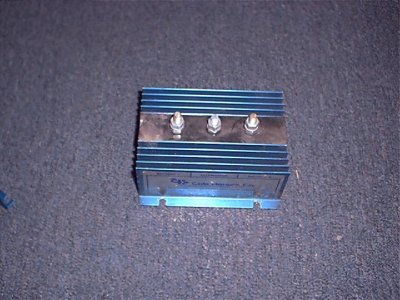Nice set-up. The split system is optimum...start/house. I really like the oil sender idea too.....just make sure it's a hard shut down.... burning up electronics by slowly eliminating voltage will kill 'em too....of course the charging isolator will help prevent that with the engine running.
I still prefer 6V batteries in a house system. There will be a deeper/longer draw availability than just one or two single 8D's. The only downside to a parallel/series set-up with sixes is, more cables to connect, which means a little more corrosion preventive maintenance and fill holes to check. Herking 6V batteries around is way easier on the back and less expensive to replace individually, no matter what your maintenance cycle or rotation is.
I also prefer full maintenance type batteries.... gels are too expensive and maintenance free....well let's just say they aren't as maintenance free as advertised. No matter the brand I've used in the last 20 years, maintenance free's have had the same failure rates as full maintenance batteries without the ability to do hydro testing and cell inspections.
My 40'er has the same 4 6V's(24V system- start and house combined) for the last 7 years....almost unheard of in a marine application....this is with 20 hours a week of use on alternator only. I don't plug my boats into shore power either. These batteries run a 2.5Kw RADAR, a 1k depth sounder as well as GPS, radio, small inverter for computer, deck(75W) and running lights(25W each times 4 minimum and 6-8 depending on my Christmas tree arrangement needed- up to 200W). Admittedly, I need to add another set just like it, because on my long runs, 12 hours or more, I will kill the juice. Energy management becomes the issue then. My alternator is only 95 amps, not quite enough to keep it topped off under heavy load.
Now that my external voltage regulator is a non-issue.... and my jack is missing, replaced with bigger one, I may use that space for an extra battery too. The arrangement isn't determined yet, but it's just one of those..."What if I's" things yet to be seen.

I agree with the starter intermittent issues, however, on those long rolls.... and yes, even those of us who know better do it.... my preference is to still up-grade those wires to next up. Just something to eliminate thinking about it. I'm so sick, I even used the expensive tinned marine grade stuff.

Not necessary at all, but it does resist corrosion better than the cheap stuff.
BTW-Battery switch is great idea, but, even with a battery switch, cable length is measured in total cable run, even if it is interrupted by a switch. Also, cables mostly corrode at the terminals... a bunch of short cables costs more in terminals and maintenance. The switch and connections also add voltage drop.. I don't know the number, but it is a consideration when doing a large wiring project. Also, every terminal is a point of corrosion. If there's any air gap between the terminal eye and the post.... can't avoid it... there will be corrosion. The solution is terminal protector, however, those type products only delay the inevitable. The more connections, the more terminal posts one has to inspect with line problems.




